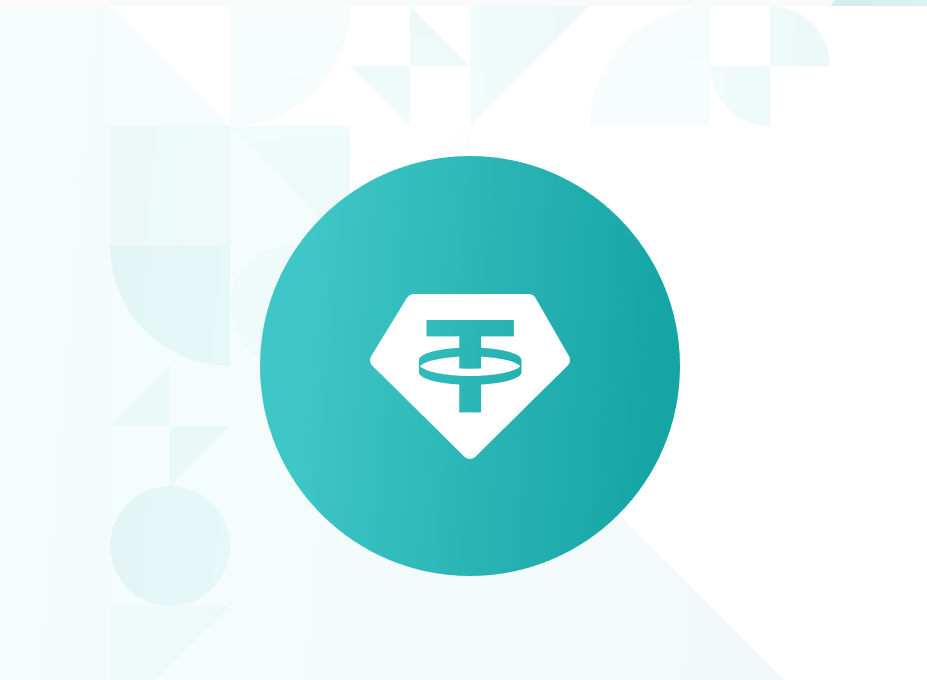Cryptocurrency might have started out as a Wild West of investing dominated by mavericks, but it’s now firmly in the financial mainstream. Institutional investors and big banks treat it as a serious asset despite recent volatility and regulatory crackdowns in China and elsewhere.
If you need evidence of how volatile, consider this: As of June 2, bitcoin’s value has ranged from a low of $28,893.62 to an all-time high of $68,789.63 over the past year.
Despite that volatility, many cryptocurrency investors remain on the lookout for the next big payoff. Keep reading to learn which cryptocurrencies might explode soon.
Which Cryptocurrency Is Set To Explode?
If you’re looking to start buying cryptocurrency, you might be wondering which one will bring the biggest potential return. Although bitcoin might be the obvious choice, it’s not necessarily the best one in 2022. Your chances of having a big payoff might be better with a smaller coin that hasn’t already been pumped up by institutional investors the way bitcoin has.
Here are six cryptocurrencies that might still have a high ceiling.
1. Ethereum (ETH)
Ethereum, commonly known as ether, is the world’s second-largest cryptocurrency behind bitcoin, even outperforming bitcoin at times. Last year, Ethereum instituted a major upgrade that included reducing the supply of ether, currently at 121.02 billion coins. The upgrade also allows the Ethereum network to handle more transactions per second, improve the platform’s scalability and lower transaction fees.
▼ETH

Compared to bitcoin, ethereum lacks scarcity — bitcoin supply is capped at 21 million coins — and widespread acceptance by companies and governments. However, unlike bitcoin, ethereum isn’t just a store of value. It’s also an infrastructure on which apps can be built. Other cryptocurrencies are issued on Ethereum, and it serves as the foundation of decentralized finance.
Many metaverse projects, including Star Atlas, Axie Infinity and The Sandbox, use the Ethereum blockchain, as do most NFTs. Another upgrade, this one scheduled for August, will transition Ethereum to a Web3-ready proof-of-stake mechanism that will reduce energy consumption by 99.5%, according to Consensys.net, and further increase security and scalability.
Ethereum is currently experiencing a major slump, losing over 50% of its value since the beginning of the year, which is about on par with other major cryptocurrencies. Some analysts say the low price presents a good buying opportunity for investors who’ve been waiting for the right time to test the cryptocurrency waters. The coin might also appeal to current investors who bought high and would benefit from dollar-cost averaging.
2. Binance Coin (BNB)
Binance is the most successful cryptocurrency exchange in terms of trading volumes. Like bitcoin, binance coin keeps a hard limit on the number of tokens in circulation — in its case, 165,116,760 tokens. This helped the token price increase exponentially in 2021. In addition, Binance puts about one-fifth of its profits each quarter into permanently getting rid of, or “burning,” BNB tokens, which raises the value of the remaining tokens.
Binance has two blockchains, which reduce the kind of bottlenecks Ethereum is vulnerable to. It’s also fast and scalable, and Binance is in the process of making the platform more regulator-friendly, according to Seeking Alpha — a feature that could be crucial to its longevity and widespread adoption. In addition, Binance is launching Bifinity, a fiat-to-cryptocurrency payment platform that will help merchants prepare to accept digital assets as payments, CoinMarketCap reported. The payment processing platform supports more than 50 cryptocurrencies and major payment networks like Visa and Mastercard.
Also working in binance coin’s favor is the fact that it outperformed bitcoin and ethereum last year and seems poised to do so this year, too. With the Binance exchange possibly expanding into Europe, as InvestorPlace says it has hinted it might do, binance coin could be ready to take off.
3. Tether (USDT)
Tether is a type of “stablecoin” designed to provide a less volatile alternative to bitcoin because it is linked to another asset. In tether’s case, that asset is the U.S. dollar. In valuation terms, tether usually has a 1-to-1 ratio with the dollar, meaning it is less volatile than cryptos such as bitcoin and ether — “usually” being the operative word.
▼Tether

Tether recently briefly dropped to $0.9455, its lowest price since December 2020, before returning to its typical price of above 99 cents, Bloomberg reported. Although analysts disagree over whether the drop constituted a true “de-pegging” from the dollar, the event led to a sell-off as investors — worried that Tether would plummet like another stablecoin, Terra — raced to move into bitcoin and other coins now selling at what some consider to be steep discounts.
With a $72.48 billion market cap, Tether is the largest stablecoin and the third-largest coin overall. It’s also the most traded stablecoin — cryptocurrency investors use it to hold funds or make transactions using funds they want to protect against the price swings to which bitcoin, ether and other non-stable cryptocurrencies are vulnerable. You can also lend it to cryptocurrency platforms in return for double-digit annualized interest rates without worrying about volatility erasing your earnings.
4. Decentraland (MANA)
Decentraland is a virtual reality game on the Ethereum blockchain that uses the MANA token as an in-game currency. Users can purchase goods and services, buy land and visit other players, as well as create and monetize their own content. MANA’s current price of $1.01 represents about a 54% increase from its 52-week low of $0.4649.
MANA is the largest gaming cryptocurrency in terms of market cap. Although it does have competition from the likes of The Sandbox and ApeCoin, and in-game assets are quite expensive — land parcels recently listed on Blockee ranged from several thousand dollars to over $22 million — it has some benefits that could push the token forward. For example, users retain ownership of the digital assets they create in Decentraland and can convert them to cryptocurrencies other than MANA.
If the Decentraland metaverse needed a legitimacy boost, it got it last month, when Millennium Hotels and Resorts launched M Social on the platform. According to a press release, this is the first metaverse hotel operated by a hospitality group. Decentraland has also signed a deal to integrate the upcoming film “The Infinite Machine” and its NFT collection into its metaverse, Variety reported.
5. Algorand (ALGO)
ALGO, founded by noted computer scientist Silvio Micali, has positioned itself as a competitor to the Ethereum blockchain. Hundreds of companies use it, according to Securities.io, and it got a huge lift last year when El Salvador said it would establish its blockchain infrastructure using Algorand. More recently, the venture capital firm Borderless Capital launched a $500 million fund to invest in digital assets that power decentralized applications on Algorand, Blockworks reported. The Marshall Islands’ central bank digital currency, Sovereign (SOV), also uses Algorand, and the International Federation of Association Football recently selected Algorand as its official blockchain.
One of ALGO’s biggest advantages is its “proof-of-stake” algorithm, which offers a high degree of security and scalability and requires less electricity than Bitcoin and other platforms. This feature will only grow in importance as cryptocurrencies face more criticism — and possible regulation — for their massive energy consumption.
6. RenderToken (RNDR)
RenderToken is a graphic rendering network that lets miners with excess graphics processing unit bandwidth parcel it out to artists and creative studios that need extra computing power. RNDR is the native token creators and miners use in their transactions on the Render Network.
The cloud graphics company Otoy is behind Render. To further level the graphics-processing playing field, Otoy recently launched its Octane X RNDR app for iOS. The app includes the same Otoy GPU renderer that studios like Disney and Marvel use, Fast Company reported.
RNDR was launched in a public sale in 2017, but it just recently got its listing on the Coinbase exchange. While highly speculative, RNDR could benefit from the increased exposure it’s getting on Coinbase as well as the extraordinary rise of non-fungible tokens for digital art.
How To Spot the Next Big Cryptocurrency
Before figuring out which cryptocurrency might be the next big winner, it helps to understand why so many investors are gravitating toward cryptocurrency in the first place. Much of it has to do with a fundamental change in how digital assets are perceived, said Jeff Dorman, chief investment officer at Arca, a financial services firm that specializes in digital assets.
“I believe we are in the early stages of a multi-decade secular shift towards digital assets, as the evolution from an analog to digital world has been transformed forever due to COVID-19,” Dorman told GOBankingRates in an email.
He says this asset class “has now evolved far beyond cryptocurrencies” to decentralized finance, NFTs and other investment vehicles.
Profit and Gains From Crypto
When trying to identify the next big cryptocurrency, two things to keep an eye on are similar to what a stock investor would keep an eye on: market capitalization and price.
Market cap shows how much has been invested in a specific network. As a general rule, the larger the market cap, the more stable the asset, though it also means the coin has less room to grow. It’s also important to keep an eye on the price to determine whether investors are bullish or bearish on the cryptocurrency.
If you want to mine, you also need to think about how to keep it running smoothly all the time:2022 Box Technology’s latest immersion cooler benefits
Other Key Metrics
Here are a few other metrics that can help you evaluate a crypto:
- Volatility: The less volatile the price, the better for the crypto’s value to remain stable.
- 24-hour volume: The total dollar value of all transactions over the past 24 hours can help you determine a coin’s liquidity.
- Supply: As bitcoin’s meteoric rise attests, scarcity can drive demand and prices. Increasing or infinite supply can have a dampening effect.
How Do I Buy Cryptocurrency?
Buying cryptocurrency is relatively easy. Here’s how to do it:
1. Open an Account With a Cryptocurrency Exchange or Broker
You’ll have to open a trading account, just like you would for stock trades. You can go through a cryptocurrency exchange like Coinbase, Binance.US or Gemini, which match buyers with sellers, or choose a broker like Robinhood or SoFi, which execute the trades for you. Exchanges typically have low fees, but they feature complicated interfaces. Brokers feature much simpler interfaces but might charge higher fees and offer a limited selection of coins.
2. Fund Your Account
Before you can trade crypto, you’ll need a way to pay for your purchases, such as a linked bank account, a wire transfer or a debit or credit card payment.
3. Place Your Cryptocurrency Order
Select the cryptocurrency you want to buy and indicate how many coins you want to purchase. To purchase fractional shares of cryptocurrency, specify a dollar amount instead of the number of coins.
Daria Uhlig contributed to the reporting for this article.
Data is accurate as of June 2, 2022, and is subject to change.
The views and opinions expressed herein are the views and opinions of the author and do not necessarily reflect those of Box Technology, Inc.
This article originally appeared on GOBankingRates.com: What Is the Next Big Cryptocurrency To Explode in 2022?



